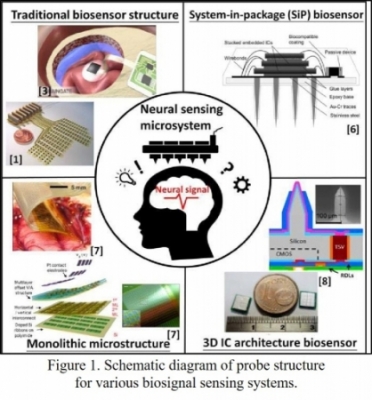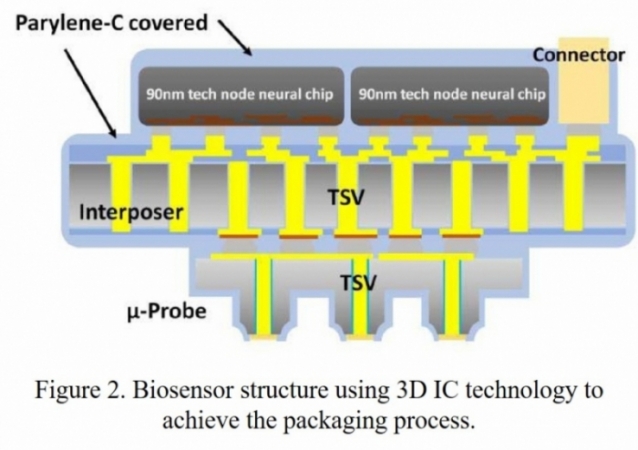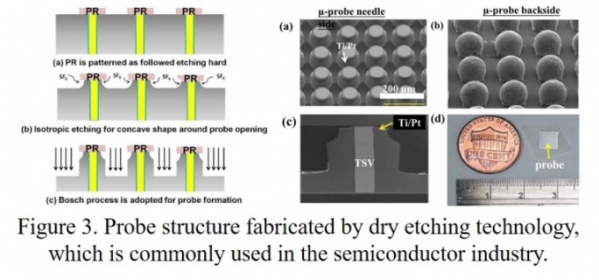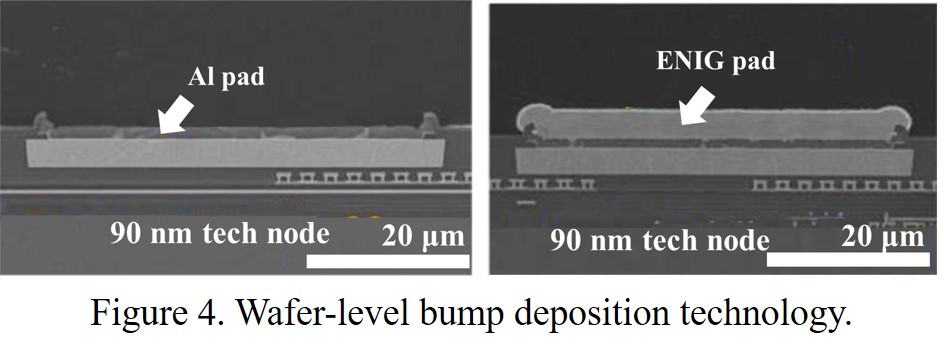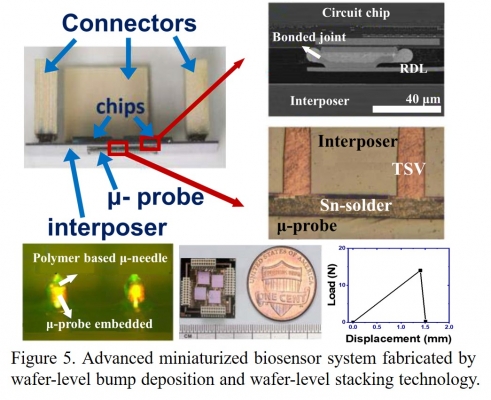Heterogeneous Integration of Biological Chips and Neuro Sensor Microsystem
In recent years, neuroscience has been attracted lots of interests in the world. For the development of neuroscience, the main bottleneck is the method to effectively capture cranial nerve signals. Therefore, various types of cranial nerve signal acquisition sensors were proposed and expected to produce comprehensive functions. An outstanding biomedical sensor must meet the demands of low signal loss, low noise, ultrahigh resolution, and ultrahigh conductive channel. In addition, to meet specific needs, test subjects need to move freely without being confined by a heavy biomedical sensor. The neuroscience system is also necessary to be small and portable. In view of this, our study utilizes the standard semiconductor manufacturing process to achieve neuroscience system with small form factor and ultrahigh resolution. Figure 1 shows a variety of different structures of the biological signal-sensing probe. Based on the semiconductor process technology, the density of the sensing probes in our system is expected to be further enhanced. Moreover, our team applied 3D IC technology to achieve the heterogeneous integration platform, which minimizes the overall volume of the system package. In addition, the wiring distance can be significantly reduced to effectively reduce noise and signal loss.
The biomedical sensor can be divided into four parts: TSV, embedded electrode probe, interposer, and biomedical chip. As Figure 2 shows, TSV provides the shortest vertical interconnection and minimizes the package size. The probe-like pattern was well designed and produced by our team using dry etching technology, which can more easily fit the cell tissue and allow the signal to be read smoother, as shown in Figure 3. Furthermore, the team also developed wafer-level bump deposition technology and wafer-level stacking technology to reduce the cost of the process, as shown in Figure 4. Figure 5 shows the result of the final packaging with an interposer containing a high density of interconnect to integrate multiple dies. This novel heterogeneously integrated neuro sensor microsystem is expected to contribute to the exploration and resolution of unknown biological mysteries in the biomedical field.

